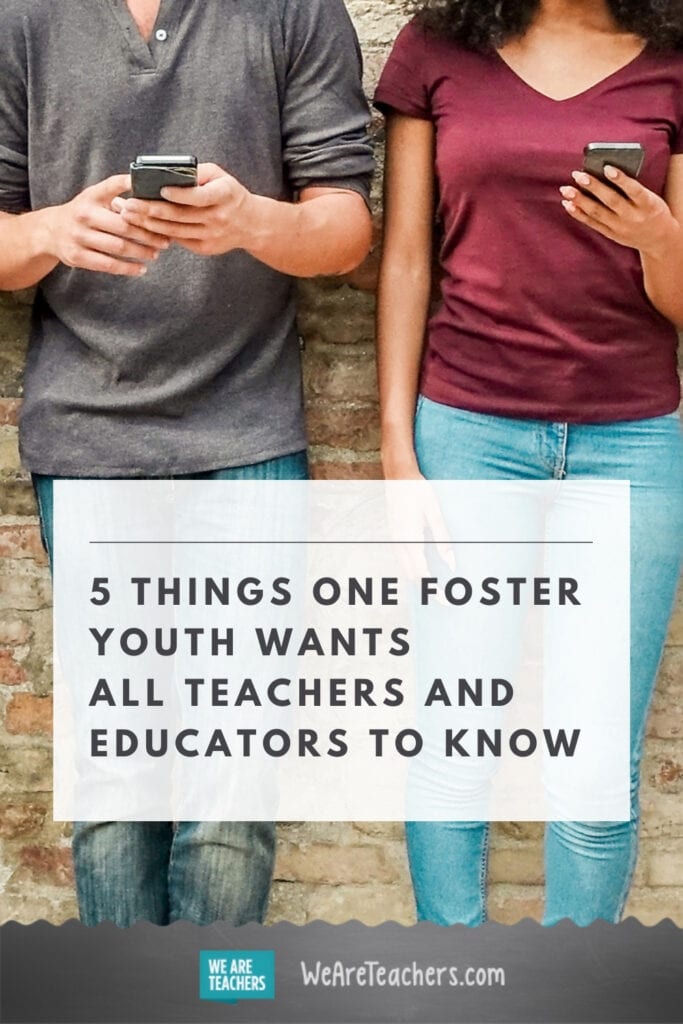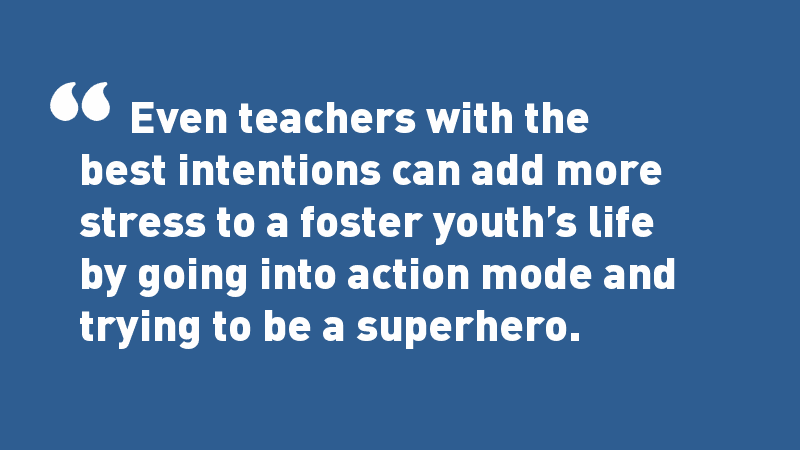With just under half a million foster youth in the U.S., at some point during an educator’s career, it’s likely they will have a student who is living or has lived in foster care. The classroom and the relationship a teacher has with these young people can be a powerful force in helping them to feel safe and important and to provide the one stable place in their lives. But, not all teachers know exactly what to do or how to do it in order to help support these students. So, we spoke to an expert and asked him for his advice and tips for teaching foster youth.
Sincere Williams is 19-years-old. He says with a warm and open smile that when people ask him if he’s “really sincere,” he often tells them, “I try to be.”
Today, Williams is a freshman at McKendree University, studying political science and public relations, and recently declared a minor in legal studies—according to most research only about 10 percent of foster youth graduate from college.
Williams entered the foster care system when he was about 13 years old, and this is his sage advice for teachers and educators.
1. Understand We Face Unique Challenges
Like most kids, foster kids don’t want to be singled out, Williams says. However, he encourages teachers to understand that the lives of foster youth (his preferred term) aren’t like most average students.
Foster youth are pulled in a million different directions, so it’s extremely difficult for them to just jump into a new classroom and feel a part of it all.
He lists some of the issues that impact foster youth:
- Moving around from home to home.
- Being separated from their biological siblings and family.
- Sometimes living with unkind families.
- Having to constantly attend meetings with social workers or in courtrooms
- Having to attend school and attempt to make friends and have a social life.
Remember, youth who experience foster care face challenges even after they’re over 18 years old and in college. As Dr. Debra Waters-Roman, a clinical associate professor at USC Suzanne Dworak-Peck School of Social Work, points out, while some alumni of foster care may have the luxury of returning to their foster families during college breaks, others may not be so lucky and have nowhere to go.
[contextly_auto_sidebar]
2. Mental and Emotional Wellness Check-ins Are Welcome
Williams explains that just being in the foster care system takes a toll on kids, particularly those who are very young. He would have loved his teachers to simply “check in” with him for any emotional or academic support.
“Teachers can make the classroom feel like an open environment. They can let the entire class know that’s it’s a safe place where students can come if they need to talk.” He adds that “It would go a long way to opening the discussion for those much-needed mental health check-ins.”
There is a growing need for mental health support for youth. From anxiety to depression, which can be compounded by issues like bullying, trauma, and lack of access to basic needs, similar to the general population, 20 percent of children and adolescents will experience a mental health concern during their school years.
3. It’s OK to Reach Out, Just Be Transparent and Genuine About It
Williams says it’s OK for teachers to ask foster youth directly how they’re doing and if they need anything. But, to earn their trust, an educator needs to be “110 percent transparent about it.” He suggests teachers talk to the social workers at the school first (if one is available) to learn as much as they can about the student. Then, they can reach out.
The best teachers know that they can’t teach until they’ve gained the respect of the class. But, not all teachers know how to go about earning teens’ respect. Trust and respect go hand-in-hand. Try these tips on elevating respect in your classroom.
4. Just Because You Know, Doesn’t Mean You Have to DO
Barring the suspicion of physical neglect or abuse, which must be legally reported, the element Williams emphasized more than anything else was that teachers resist the temptation of being what he calls “too action-oriented.” Instead of doing something to solve an issue, he suggests simply listening. “Even teachers with the best intentions can add more stress to a foster youth’s life by going into action mode and trying to be a superhero,” he says. “Move slowly. Take your time. And earn your right to help. Not everything is a crisis.”
5. Educate Yourself
Just as it is with issues such as race, gender, immigration, or LGBTQ, for teachers to be most effective for students living in foster care, they must educate themselves about the topic. It’s not up to the students to explain what it feels like for them to be themselves. Williams says those teaching foster youth should self-educate about the items the students might be struggling with.
First Star is a national non-profit that partners foster youth with child welfare agencies, universities, and schools to help support them into adulthood successfully. Other resources include Foster Care Advocates, Foster Club, Children of the Night, Fostering Great Ideas 4 Kids, and Foster Care to Success.
As our conversation with Sincere ended, he described an initiative he’s working on in school. It involves integrating curriculum for the LGBTQ community into public classrooms and programs. His face lit up as he talked about it, and he emphasized that “in order for teachers to be most effective, just like in this initiative, they need get educated on what foster youth are going through, and that will be the key to helping them help their students.”
What is your advice for teaching foster youth? Share in the comments below.
Want more articles like this? Make sure to subscribe to our newsletters.


